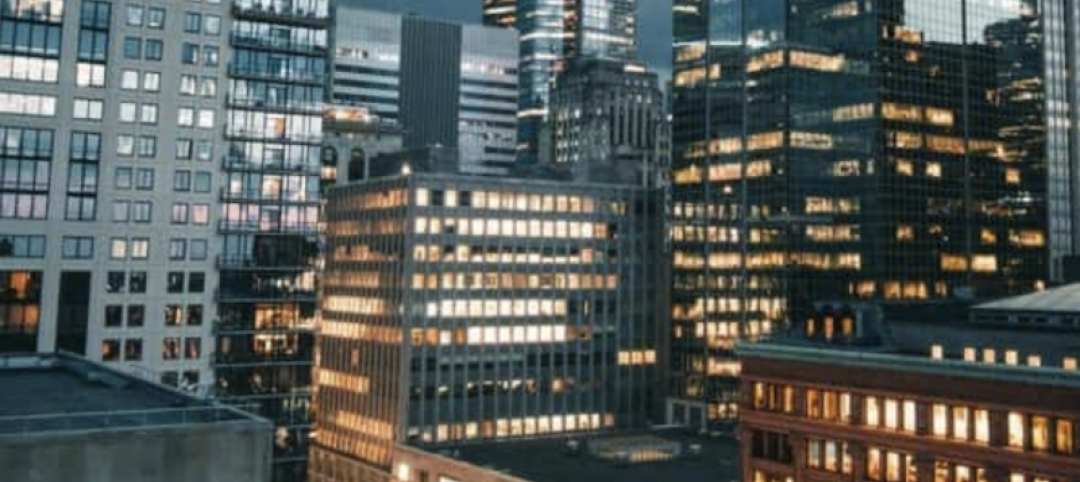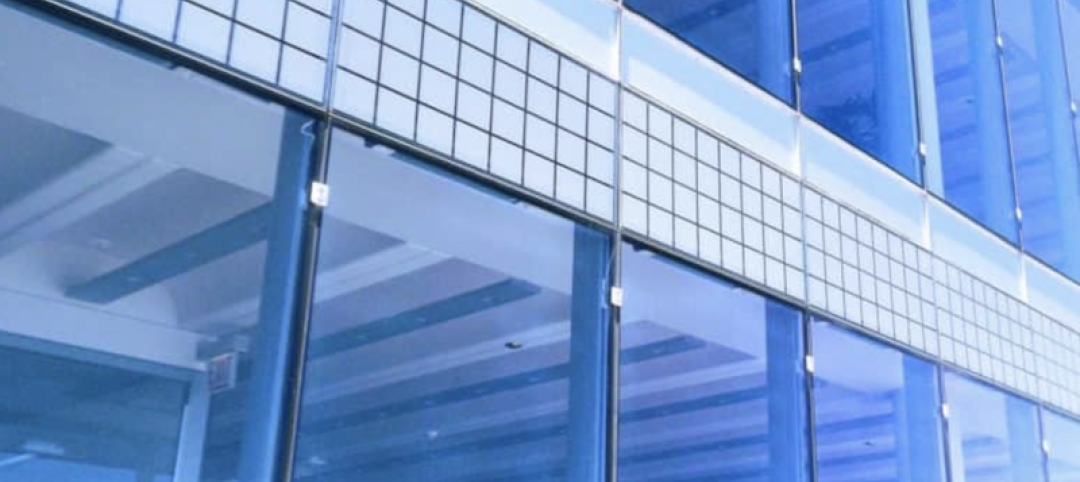During his State of the Union address, President Obama framed his speech around a 15-year time period. He started with where the country was in 2000, discussed the positives and negatives (in his view) that occurred in the last 15 years, and ended with his predictions for the country’s achievements in the next 15 years. He argued that we have overcome many obstacles, and, through the process, have a solid foundation to build on for the future.
Putting politics aside, the time frame got me thinking about the State of the “Green” Union. Indeed, much has changed in the last 15 years. We’ve had significant achievements in green buildings, along with our share of setbacks. But overall, the journey has been unbelievable. The history of the green movement offers cues that we are on the precipice of another significant shift in the Green Union.
The Early Years: 2000-05
At the turn of the century, the industry was just discovering a new rating system called LEED. By 2005, it had developed from a niche program to one that began to capture a significant piece of the new development pipeline. In 2000, a number of early adopters used the program to back check that their aspirations were connected to industry best practices. Within five years, interest had grown to the point where many professionals recognized the benefits to becoming a LEED AP, ramping up interest in the program.
This was indeed an exciting time to be in the industry. The program was loosely defined, and early adopters were free to create innovative ways to achieve certification. In some ways it was the Wild West of sustainability. The LEED framework offered the opportunity to move the needle by focusing on integrated design. Collaboration was the key to success, and the process was invigorating to those who were willing to take the plunge and try something different. At this point in time, any level of certification was deemed groundbreaking, and early adopters received a lot of attention.
The Middle Years: 2005-10
Over time, organizations began to demand greater transparency of the LEED process to make the program more predictable and for it to be more widely applicable. USGBC responded by creating new rating systems, and education programs to feed growing demand. LEED took off like lightning, the USGBC rapidly grew, and almost overnight, fought to become the industry standard.
Debates around competing rating systems were making the rounds, but in the end, the market spoke loud and clear that LEED was the preferred solution. Suddenly, a Silver certification was the new base rating and many cities and federal government groups began integrating LEED into incentive programs or as a base requirement.
When the recession hit, those who were able to build and grow continued to adopt LEED. The rating became a differentiator in many markets. If you wanted to compete for limited construction dollars during the lean years, LEED was one of the ways to do it. Because of the economy, teams had to be very well coordinated and efficient to deliver a LEED rating. The question: “how much more does it cost to build to LEED standards” was being asked and answered. Over time, we learned that a good team could achieve certification by cost shifting within a budget rather than having to ask for more money.
The Recent Years: 2010-15
Over the last five years, we have seen another shift in the behavior of the industry. LEED has now become code minimum in many cities and counties, such as Washington DC and Arlington, VA. CalGreen (California’s Green Building Code) and ASHRAE 189 were released in rapid succession and for the first time, municipalities and other governments started to mandate performance targets that were once optional within the LEED program.
That trend has continued and the USGBC is now collaborating with multiple parties to create a comprehensive framework for jurisdictions that want to implement and adopt green building regulations and codes or provide incentives for voluntary leadership programs such as LEED. Gold (and even Platinum in some markets) is now considered the new industry standard.
Given the recent move to align with codes, and the saturation of the market, it should come as no shock that LEED v4 has been met with excitement as well as hesitation. LEED has made such progress in adoption and standardization, that to many, v4 seems like another change for change’s sake. Bending to market pressures, the USGBC has twice moved the mandatory date of adoption for LEED v4, which is now October 2016. In 2014, USGBC introduced LEED Online for LEED v4 projects to streamline the documentation process.
So in a sense, we are back to where we were at the start of the century, with many questioning the value of LEED: the innovators who believe that delaying adoption is slowing us down, as well as those who have invested substantially in coming up to speed on the old versions and cringing at the thought of having to do it all over again.
The next trend?
While LEED continues to gain market share, particularly in countries outside the US, another green building trend has emerged. In 2010, the SEC determined that Climate Change was a material risk and its potential impacts had to be disclosed to investors. While this was loosely defined and did not apply to everyone, it signaled to many that the time to measure their carbon footprint had come.
During the last couple of years, we have seen a rise in demand for corporate reporting.
The Carbon Disclosure Project (CDP), Global Real Estate Sustainability Benchmark (GRESB), and the Global Reporting Initiative (GRI) have moved from niche to mainstream. Companies and cities, large and small, are now hiring Chief Sustainability Officers to deal with the rising demand for transparency and action.
This new pressure has resulted in a number of companies making substantial investments in data management systems to handle the influx of thousands (and for some hundreds of thousands) of points of utility data.
After a few years of reporting, companies find that they finally have a good grasp on data from which to build sustainability initiatives that address their material impacts on the environment. In turn, reporting programs are no longer awarding high rankings just for having transparent disclosures. To rank the highest, you now need programs in place demonstrating that you are taking action based on your results.
The Next Fifteen Years: 2015-30h
Looking at the adoption curves of both LEED and corporate reporting, I believe we are in transition from the former to the latter. The LEED program is currently the industry standard, and, many will continue to use it (such as cities and municipalities). They will eventually adopt LEED v4, or, adopt code language based on LEED.
The pushback will continue, but organizations will eventually be forced to become more sustainable and document their results – not just the process they used but how they achieved measurable change.
I believe the days in which rapid industry progress is made through the LEED program (as we know it today) has peaked within the United States. This does not mean that I think that LEED is irrelevant, or, that the industry will slow down in making performance gains. On the contrary, I believe that we are on the precipice of another big industry trend that will be more impactful, powerful, and more meaningful to those involved.
Tomorrow, owners and operators will be much more focused on monitoring real time data that will allow them to more specifically target performance improvements. The debate around the cost of LEED will shift towards the cost per BTU/SF reduction. Owners will search for investments that have the best paybacks, which could result in investing in their poorest performing properties with the greatest potential to improve rather than trying to rate their best performing properties.
With the USGBC acquiring GRESB and developing the LEED Dynamic Plaque, it is clear USGBC knows that change is coming and is preparing for it. The USGBC leadership will be ready for tomorrow.
The question is, will you be ready?
About the Author: Brad Pease is a Director, AIA, LEED® AP BD+C with Paladino Austin. More on Pease.
More from Author
Paladino | Jan 10, 2022
The future of regenerative building is performance-based
Why measuring performance results is so critical, but also easier said than done.
Paladino | May 26, 2021
Injecting embodied carbon capability into the integrated design and construction process
Embodied carbon is defined as the carbon footprint of a material, and is expressed in metric tons of CO2e.
Paladino | May 12, 2021
Climate modeling for a resilient business and future
This post explores changes that developers and their teams need to make to their risk and resilience strategies by climate modeling for climate change.
Paladino | Apr 26, 2021
Building performance requirements are coming: Are you ready?
Building Performance Requirements are trending nationwide and are likely coming to a county near you.
Paladino | Feb 8, 2021
Six lessons learned from our first Fitwel Viral Response Module certification
The Fitwel Viral Response Module is one of several frameworks that real estate owners and operators can use to obtain third-party certification for their efforts ensuring their properties are ready for a safer and healthier return to work.
Paladino | Jan 14, 2021
Shift your energy to carbon
Now is the right and necessary time for the commercial real estate industry to shift its environmental strategy from just energy, a carbon contributor, to carbon itself.
Paladino | Nov 13, 2020
5 tips when designing for daylight
Daylight modeling is a tool to examine how daylight interacts with a building, and how that natural light behaves within interior spaces.
Paladino | Jul 16, 2020
COVID readiness: IWBI and USGBC seek to help businesses quantify risk
In an effort to address the risks of COVID-19 at the building scale, USGBC and IWBI have analyzed existing certification guidelines and drafted new, relevant content.
Paladino | Jun 5, 2020
3 strategies to improve the wellness of building systems and gain tenant trust
Three operational issues that must be prioritized for every building in order to achieve tenant trust are air quality/ventilation, relative humidity, and building commissioning.
















